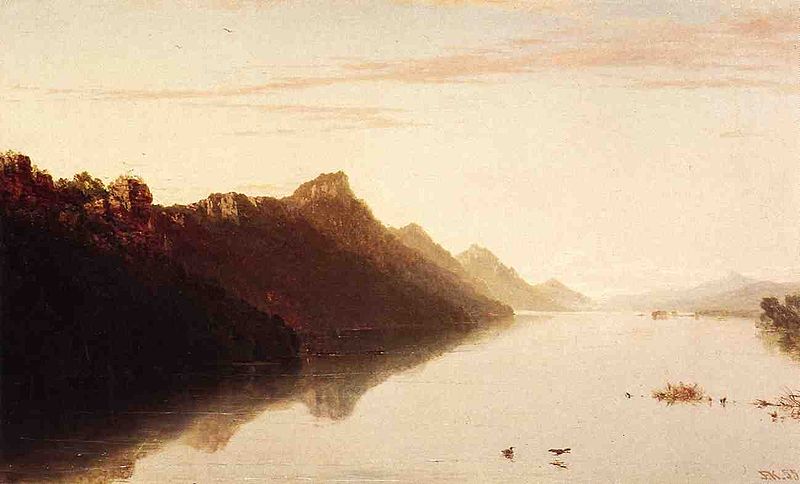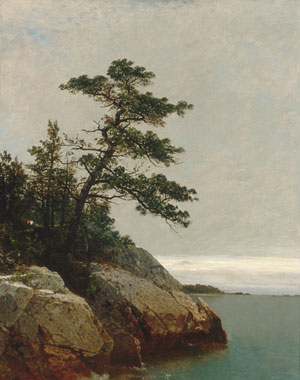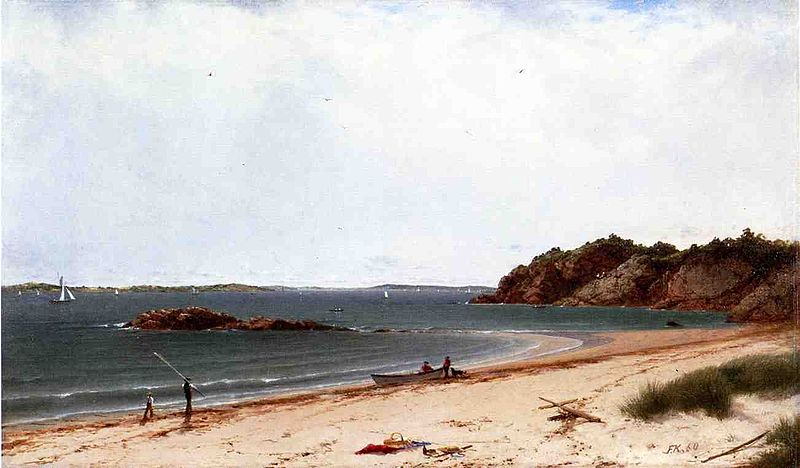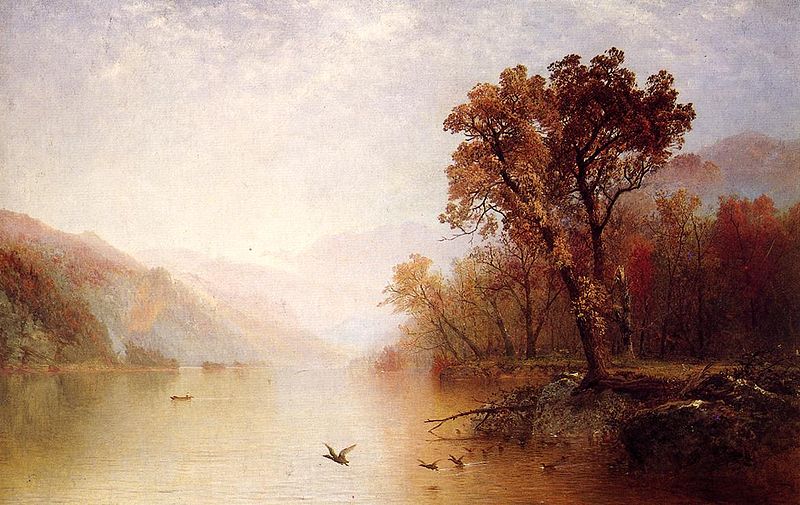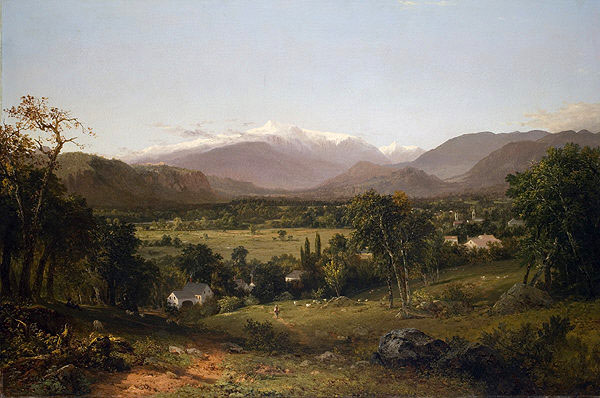<Back to Index>
- Painter Frederic Edwin Church, 1826
- Painter John Frederick Kensett, 1816
PAGE SPONSOR
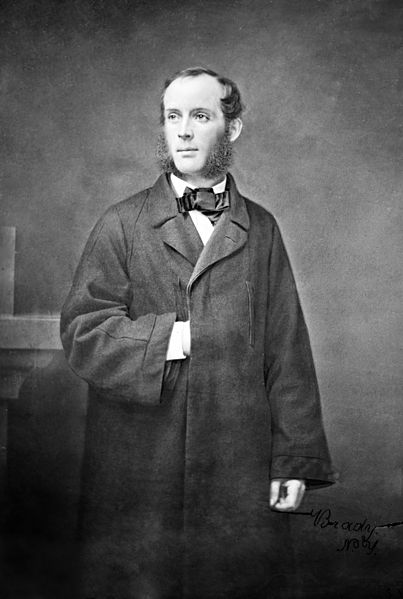
Frederic Edwin Church (May 4, 1826 – April 7, 1900) was an American landscape painter born in Hartford, Connecticut. He was a central figure in the Hudson River School of American landscape painters. While committed to the natural sciences, he was "always concerned with including a spiritual dimension in his works."
Church was the son of Eliza (née Janes) and Joseph Church. The family
wealth came from Church's father, a silversmith and watchmaker in
Hartford, Connecticut (Joseph subsequently also became an official and a
director of The Aetna Life Insurance Company). Joseph, in turn, was the
son of Samuel Church, who founded the first paper mill in Lee,
Massachusetts, in the Berkshires, and this allowed him (Frederic) to
pursue his interest in art from a very early age. At eighteen years of
age, Church became the pupil of Thomas Cole in Catskill, New York,
after Daniel Wadsworth, a family neighbor and founder of the Wadsworth
Atheneum, introduced the two. In May 1848, Church was elected as the
youngest Associate of the National Academy of Design and was promoted to
Academician the following year. Soon after, he sold his first major
work to Hartford's Wadsworth Atheneum.
Church settled in New York where he taught his first pupil, William James Stillman. From the spring to autumn each year Church would travel, often by foot, sketching. He returned each winter to paint and to sell his work.
In 1853 and 1857, Church traveled in South America. One trip was financed by businessman Cyrus West Field, who wished to use Church's paintings to lure investors to his South American ventures. Church was inspired by the Prussian explorer Alexander von Humboldt's Cosmos and his exploration of the continent; Humboldt had challenged artists to portray the "physiognomy" of the Andes.
Two years after returning to the US, Church painted The Heart of the Andes (1859), now in the collection of the Metropolitan Museum of Art, at the Tenth Street Studio in New York City. It is more than five feet high and nearly ten feet in length (167.9 × 302.9 cm). Church unveiled the painting to an astonished public in New York City in 1859. The painting's frame had drawn curtains fitted to it, creating the illusion of a view out a window. The audience sat on benches to view the piece and Church strategically darkened the room, but spotlighted the landscape painting. Church also brought plants from a past trip to South America to heighten the viewers' experience. The public were charged admission and provided with opera glasses to examine the painting's details. The work was an instant success. Church eventually sold it for $10,000, at that time the highest price ever paid for a work by a living American artist.
Church showed his paintings at the annual exhibitions of the National Academy of Design, the American Art Union, and at the Boston Art Club, alongside Thomas Cole, Asher Brown Durand, John F. Kensett and Jasper F. Cropsey.
Critics and collectors appreciated the new art of landscape on display,
and its progenitors came be to called the Hudson River School.
In 1860 Church bought a farm in Hudson, New York, and married Isabel Carnes. Both Church's first son and daughter died in March, 1865 of diphtheria, but he and his wife started a new family with the birth of Frederic Joseph in 1866. When he and his wife had a family of four children, they began to travel together. In 1867 they visited Europe and the Middle East, allowing Church to return to painting larger works.
Before leaving on that trip, Church purchased the eighteen acres (73,000 m²) on the hilltop above his Hudson farm — land he had long wanted because of its magnificent views of the Hudson River and the Catskills. In 1870 he began the construction of a Persian - inspired mansion on the hilltop and the family moved into the home in the summer of 1872. Richard Morris Hunt was the architect for Cosy Cottage at Olana, and was consulted early on in the plans for the mansion, but after the Church's trip to Europe and what is now Lebanon, Israel, Palestine, Syria, Jordan and Egypt, the English architect Calvert Vaux was hired to complete the project. Church was deeply involved in the process, even completing his own architectural sketches for its design. This highly personal and eclectic castle incorporated many of the design ideas that he had acquired during his travels.
Illness affected Church's output. Although he was enormously
successful as an artist by 1876 Church was stricken with rheumatoid
arthritis
which greatly reduced his ability to paint. He eventually painted with
his left hand and continued to produce his work although on a much
slower pace. He devoted much of his energies during the final 20 years
of his life to his house at Olana. Church died on April 7, 1900. He is
buried in Spring Grove Cemetery, Hartford, Connecticut.
Olana State Historic Site
is now owned and operated by the New York State Office of Parks,
Recreation and Historic Preservation, Taconic Region, and receives
extensive support from The Olana Partnership, a private, non - profit
organization.
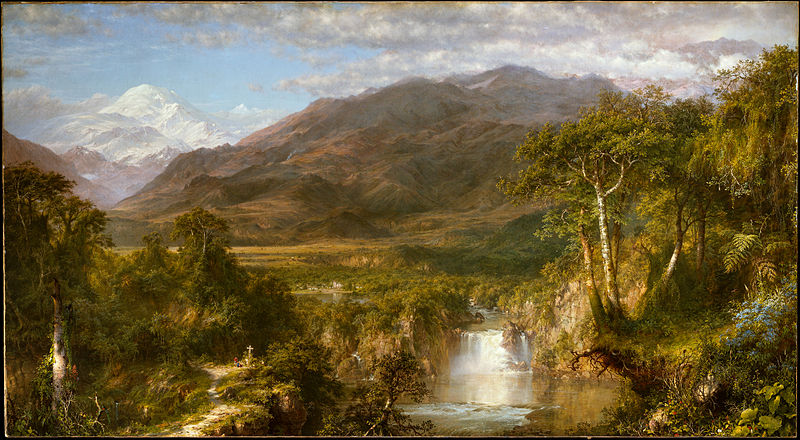
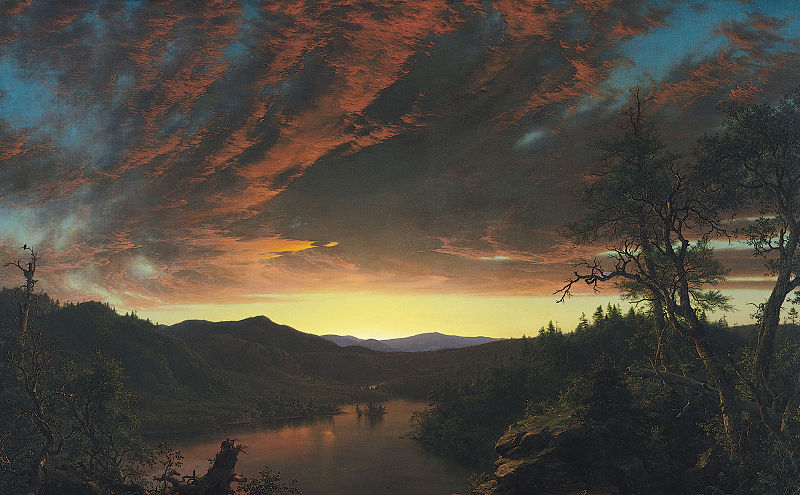
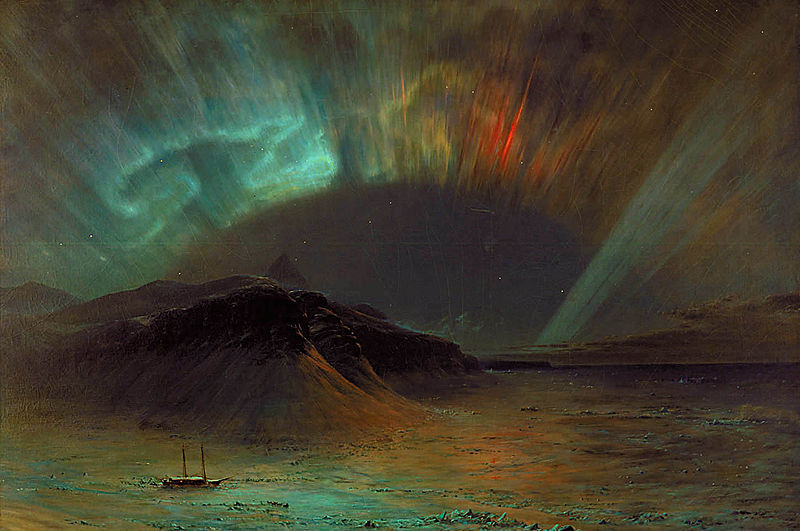
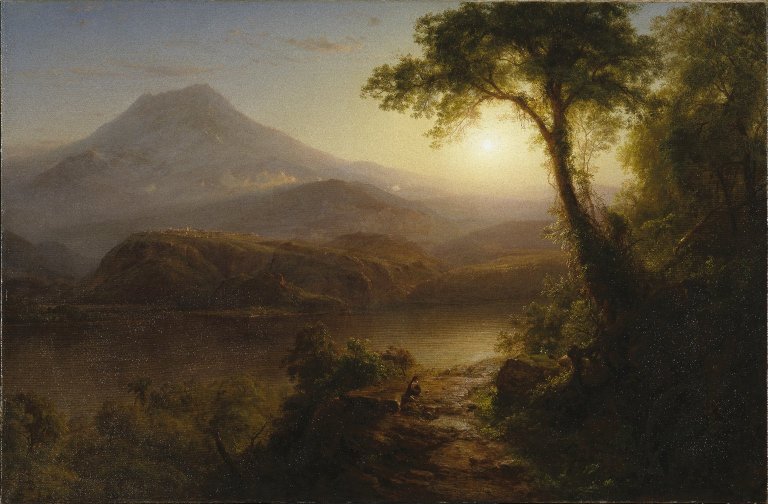
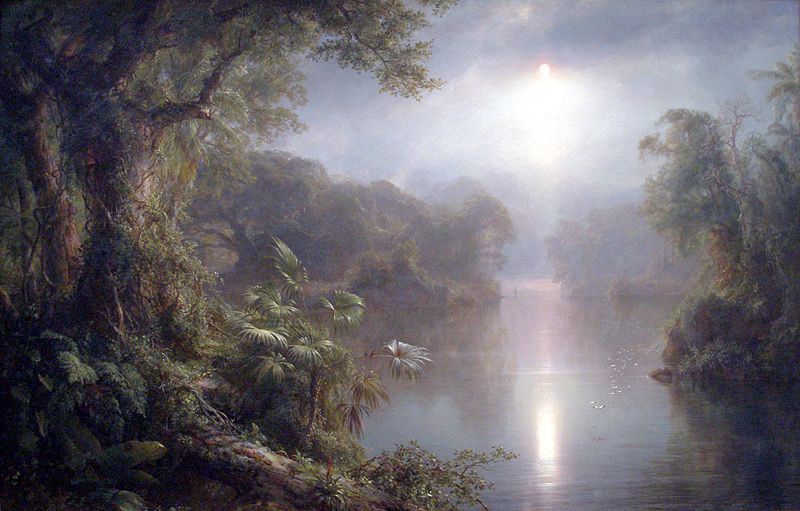
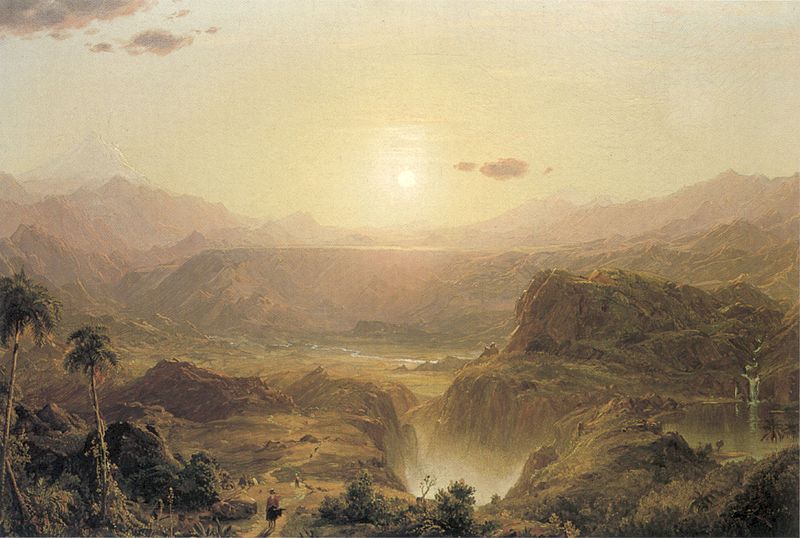
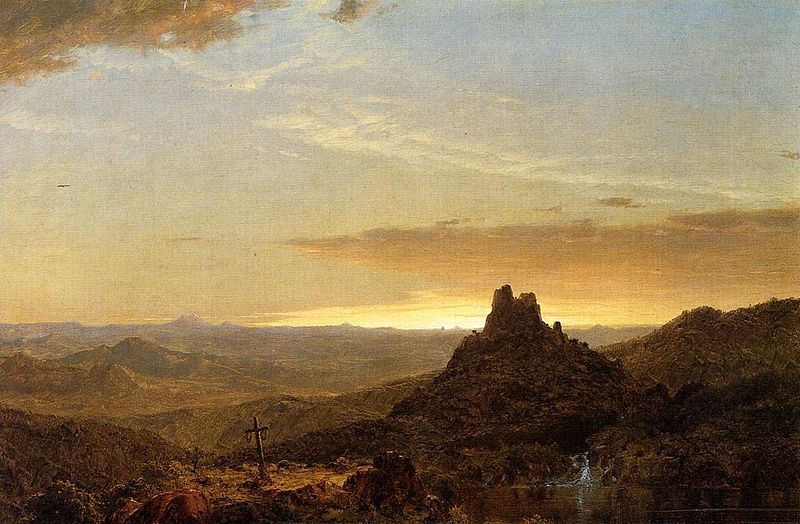
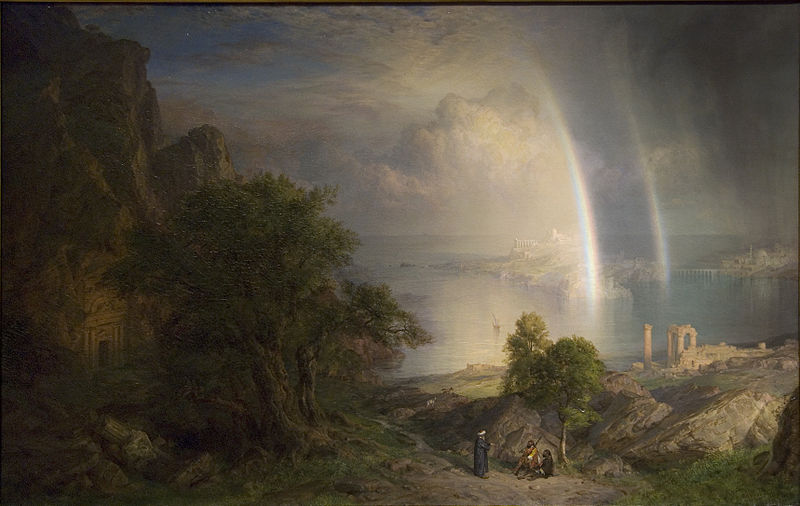
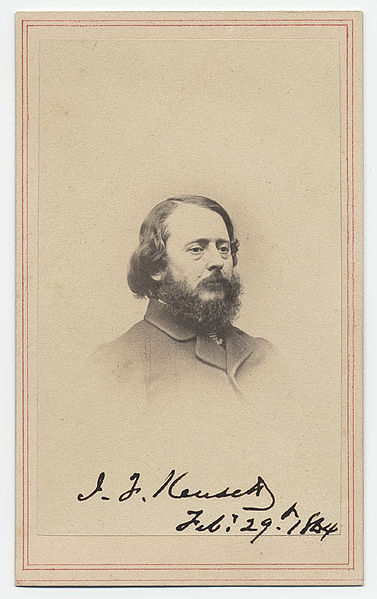
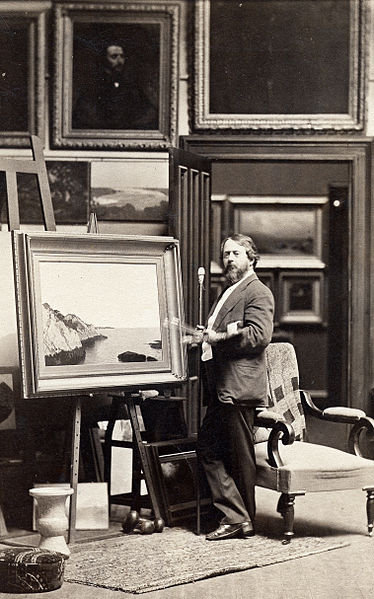
John Frederick Kensett (March 22, 1816 in Cheshire, Connecticut - December 14, 1872 in New York City) was an American artist and engraver. He attended school at Cheshire Academy, and studied engraving with his immigrant father, Thomas Kensett, and later with his uncle, Alfred Dagget. He worked as engraver in the New Haven area until about 1838, after which he went to work as a bank note engraver in New York City.
In 1840, along with Asher Durand and John William Casilear, Kensett traveled to Europe in order to study painting. There he met and traveled with Benjamin Champney. The two sketched and painted throughout Europe, refining their talents. During this period, Kensett developed an appreciation and affinity for 17th century Dutch landscape painting. Kensett and Champney returned to the United States in 1847.
After establishing his studio and settling in New York, Kensett traveled extensively throughout the Northeast and the Colorado Rockies as well as making several trips back to Europe.
Kensett is best known for his landscape of upstate New York and New England and seascapes of coastal New Jersey, Long Island and New England. He is most closely associated with the "second generation" of the Hudson River School. Along with Sanford Robinson Gifford, Fitz Henry Lane, Jasper Francis Cropsey, Martin Johnson Heade and others, the works of the "Luminists", as they came to be known, were characterized by unselfconscious, nearly invisible brushstrokes used to convey the qualities and effects of atmospheric light. It could be considered the spiritual, if not stylistic, cousin to Impressionism. Such spiritualism stemmed from Transcendentalist philosophies of sublime nature and contemplation bringing one closer to a spiritual truth.
In 1851 Kensett painted a monumental canvas of Mount Washington that has become an icon of White Mountain art. Mount Washington from the Valley of Conway was purchased by the American Art Union, made into an engraving by James Smillie, and distributed to 13,000 Art Union subscribers throughout the country. Other artists painted copies of this scene from the print. Currier and Ives published a similar print in about 1860. This single painting by Kensett helped to popularize the White Mountain region of New Hampshire.
Kensett's style evolved gradually, from the traditional Hudson River School manner in the 1850s into the more refined Luminist style in his later years. By the early 1870s Kensett was spending considerable time at his home on Contentment Island, on Long Island Sound near Darien, Connecticut.
It was during this time that Kensett painted some of his finest works. Many of these were spare and luminist seascapes, the prime example being Eaton's Neck, Long Island (1872) now in the collection of the Metropolitan Museum of Art in New York.
The artist was widely acclaimed and financially successful during his lifetime. In turn, he was generous in support of the arts and artists. He was a full member of the National Academy of Design, the founder and president of the Artists' Fund Society, and a founder and trustee of the Metropolitan Museum of Art.
Kensett contracted pneumonia (perhaps during the attempted rescue of Mary Lydia (Hancock) Colyer, the wife of his friend and fellow artist Vincent Colyer in Long Island Sound) and died of heart failure at his New York studio in December 1872.
The first complete biography and factual study of Kensett's work was written by Ellen H. Johnson, published in 1957.
